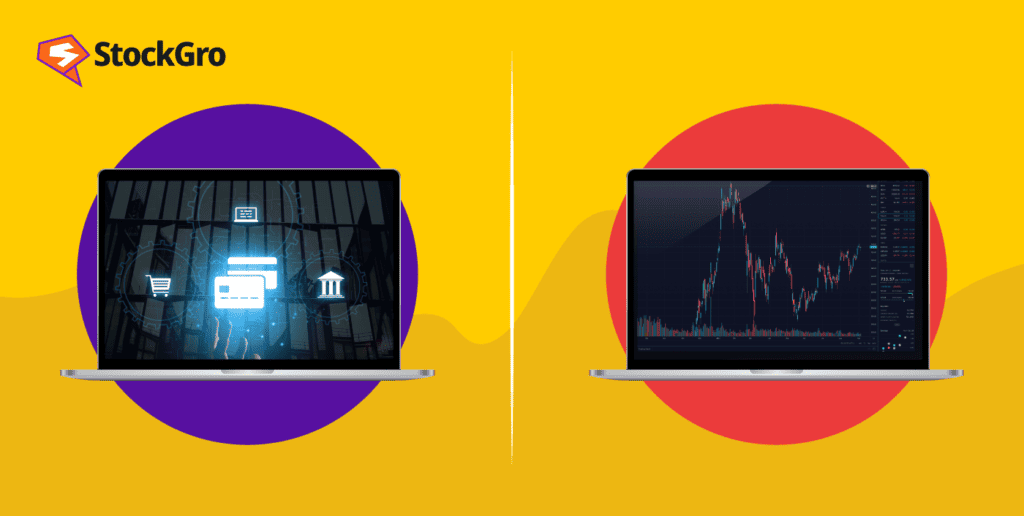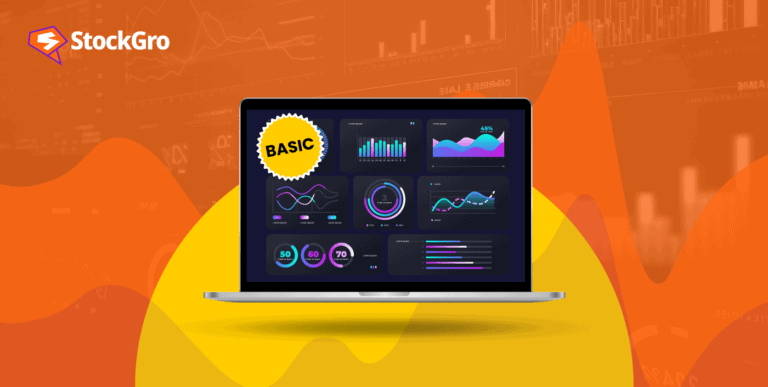
A demat account usually comes alongside a trading account. Many investors do not know that there is a difference among the two accounts. Banks have the facility to open a 3 in 1 banking account. It comprises of the following accounts:
- Savings account
- Demat account
- Trading account
It is common for individuals to find themselves perplexed by the distinction between demat and trading accounts. These two accounts serve different purposes. A demat account primarily stores your shares and securities held in your name.
On the other hand, if you wish to engage in the purchase and sale of shares, you can open a trading account.
In this blog, we will understand a demat and trading account in-depth and how they differ:
Understanding a dematerialised account
A dematerialised account is a digital repository that helps you to hold shares in a digital format. If you possess physical share certificates, a demat account facilitates their conversion into electronic form, enhancing accessibility and security.
Think of it as similar to a bank account where you can securely store your stocks. Just as a bank account keeps a record of your financial transactions, a demat account logs the sale and purchase of shares.
Demat account isn’t limited to stocks alone; it accommodates a diverse range of investments such as equity shares, bonds, government securities, mutual funds, and exchange-traded funds.
Upon opening a stock market demat account, you’ll receive an account number, enabling electronic settlement of your trades. Importantly, you aren’t obliged to own any shares in your demat account.
However, it’s important to note that merely having a demat account doesn’t grant you the ability to engage in daily stock trading. For active stock trading, you’ll need a trading account in addition to your demat account.
Also read: How does intraday trading work?
What is a trading account?
In the 1990s, stock market buying and selling was conducted on the stock market floor through verbal communication. However, as stock markets transitioned into the digital era, this manual process was replaced by the introduction of trading accounts.
A trading account enables investors to engage in the buying and selling of securities in the stock market.
Its purpose is to maintain the execution of trades, monitor market dynamics, and oversee investment holdings. They are accessible through a trading platform or app provided by your chosen broker, a trading account offers the convenience of placing orders, utilising market analysis tools, and receiving real-time price updates.
Also read: How safe is it to trade in the dabba market? All about dabba trading
Difference between trading and demat account
Here are the differences between trading and demat accounts:
| Basis | Trading Account | Demat Account |
| Purpose | A trading account serves the purpose of executing orders and trading securities and stocks within the stock exchange. | A dematerialised account electronically holds securities like stocks in a digital/ electronic form. |
| Account Opening | A stockbroker can help open an account. | Requires a depository participant to open an account. |
| Nature of transactions | Facilitates the transfer of shares within the exchange. | The exchange of securities takes place from a dematerialised a/c to a trading a/c and vice versa. |
| Fee | Trading account charges include brokerage, transaction and other charges like STT, stamp duty and GST. | Demat account charges include annual maintenance charges, dematerialisation and rematerialisation charges. |
Also read: Exploring the art of speculation
Steps to open a demat and trading account
To invest or trade in the secondary market, a demat account and a trading account both are equally important. Just as a demat account is crucial, a trading account plays an equally vital role in stock market investments.
Step 1: Research
Here are some key considerations when selecting a demat account broker:
- Compare the various account charges, including annual maintenance fees and transaction fees. Opt for a DP(Depository Participant) with minimal additional costs.
- Check if the account opening process is convenient, preferably online.
- Consider opting for a three-in-one account that combines savings, demat, and trading functions to streamline your trading activities.
- The demat trading app should be very simple to understand and easy to use.
- Review any charges related to debits, obtaining physical copies of documents, Debit Instruction Slip (DIS) or Demat Request Form (DRF) denials, and converting physical share certificates to electronic format.
Step 2: Visit the broker’s website
Here are the steps needed to complete the online application:
• Complete the online account application form.
• Provide your basic details.
• Upload necessary documents, including your photograph, PAN card, signature, address proof, and a cancelled cheque.
Step 3: Complete IPV (In-Person Verification)
Fulfil the IPV requirement to verify your identity. Electronically sign the documents via an Aadhaar-linked phone number and submit your application.
Once you are done with the above steps, you are all set to trade or invest in the stock market. You will also receive login details and account information, allowing you to access your demat and trading accounts and commence your trading activities.
Conclusion
In conclusion, it’s vital to grasp the distinction between trading and demat accounts, particularly as more individuals are drawn to stock market investments to enhance their wealth. Having both accounts is of key importance to investing or trading in the stock market.
Begin your investment journey today with StockGro. Happy Investing!

